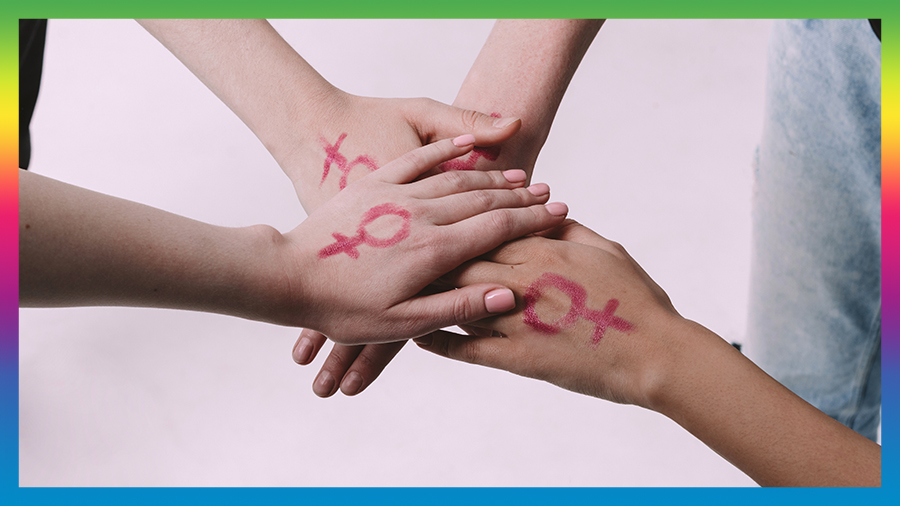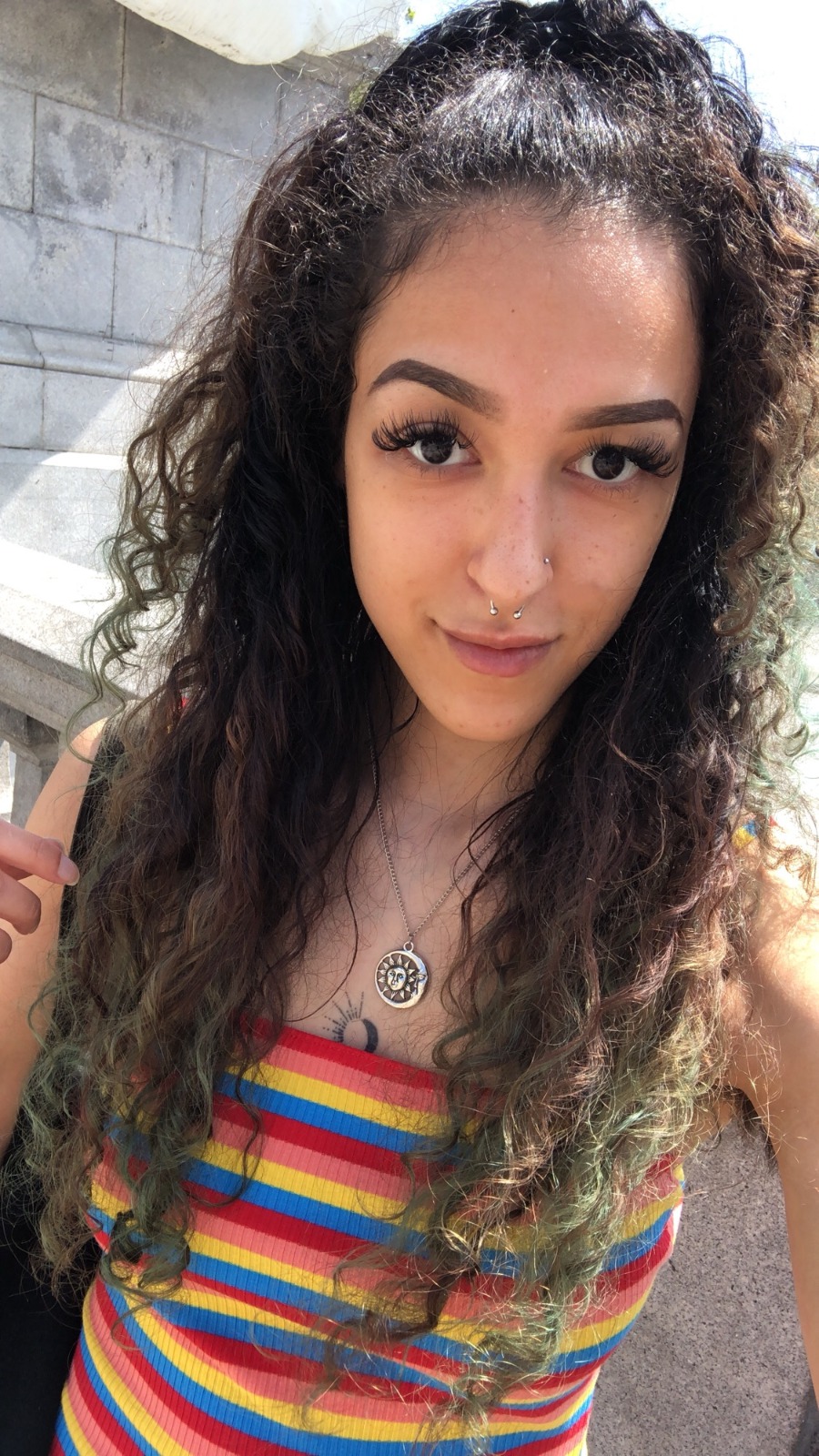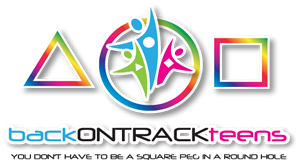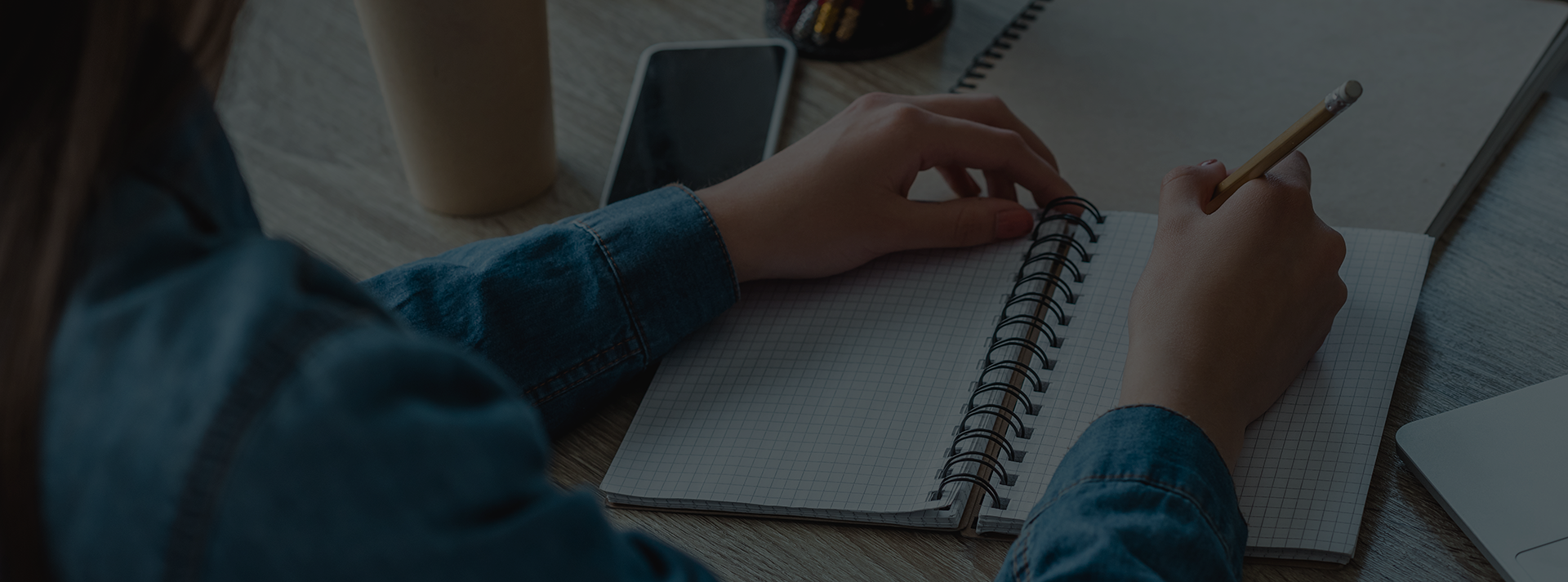
28 Aug Tayshan’s story: I have she/her in my email signature and it’s opened up so many conversations
Hey – thanks for having us on your screen. Welcome to the Back on Track Teens blog for young people and those young at heart.
You’ve loaded a blog article that’s part of a mini-series about gender and sexual identity*. The mini-series shares 11 wonderful and inspiring stories from young people who identify as LGBTQ+. Feel free to read on but you may want to pause and have a quick scan of the opening article to give a bit of context around the collection of stories and resources available. Please click here to read the first article.
Welcome to the first blog article in the Back on Track Teens mini-series. In this series, we’ll be spotlighting a variety of incredible young people who’ve very kindly shared their stories in the podcast, exploring different genders and sexual identities.
To celebrate the launch of this incredibly exciting and important series, Back on Track Teens CEO TeeJay Dowe has penned this piece, based on an unforgettable conversation she had on the podcast with her amazing daughter, Tayshan.
Hi everyone! It’s TeeJay, here. I want to tell you about a truly awesome conversation I had recently with my gorgeous daughter, Tayshan. I’d hoped that we’d manage to kickstart the series with an exploration of her thoughts around gender and sexual identity – I think we managed to knock it out the park, if I do say so myself!
Together, we recollect her personal story and I delve into the questions she asked herself and the responses she faced from people inside and outside of her social circle.
It’s unusual for a podcast to have a mother and daughter talking about something that is still sensitive and taboo for a lot of people. At the same time, it’s an important topic that needs more representation and visibility in society.
A real life gender and sexual identity story: Introducing Tayshan – my daughter ☺

Tayshan’s story
Name: Tayshan Dowe
Occupation: Specialist recruitment consultant
Age: 23
Pronouns: She/her
Sexual identity: Lesbian
“My name is Tayshan, I’m 23, vegan, live in Stoke-on-Trent, use she/her pronouns and currently identify as lesbian. I absolutely love gymnastics and dance and am very spiritual. I meditate, read books, listen to podcasts (not being on one) and love learning new things. I’m very involved in social causes, such as feminism, anti-racism, animal rights, the environment – and of course LGBTQ+ rights. I love to educate myself and help to educate other people too.”
What’s a pronoun in relationship to identity?
You may have heard pronouns such as she/her, /he/him, they/them or mixed pronouns, such as she/they. You may have seen them online or printed in text next to a person’s name. Pronouns indicate how people should be referred to. Sometimes the use of pronouns will change, but it usually depends on the individual and how they feel. Some people even choose to wear coloured wrist bands or bracelets that express what their pronouns are.
Using pronouns can appear complex, particularly for people who have been used to binary gender pronouns and typical male/female vernacular. This raises the question, ‘Should you ask what people’s pronouns are?’
Tayshan suggests considering who you are with before asking the question. If she’s unsure and is with people of her own age (early twenties or younger), then she will ask. With an older generation, or at work, she generally wouldn’t – but insists that it’s a choice.
“I have she/her in my email signature and it’s opened up so many conversations with people asking what it means. Slowly, new ways of communicating, such as identifying with personal gender pronouns is opening peoples’ minds and understanding about sexual and gender identity.”
“I am cisgender and identify as the gender I was born (female), but I’m not straight. I realised this at around 15 years old. When I look back now, it’s clear that I wasn’t straight. At the age of 12 I had a best friend and all we talked about was living together, getting married and having children. I realise now that was clearly a lesbian relationship.”
What was it like to ‘come out’?
“I originally came out at the age of 15 as bisexual and I identified as this until the beginning of 2021. It was easy and never bothered me. I said, ‘Yeah I like girls too’ and I was always OK with that. I remember saying to my boyfriend once that ‘I wouldn’t be with another man if I wasn’t with you’. The two of us had a complicated history so we connected with each other, but when we split up in 2020, I went through a sexual crisis.
I knew I didn’t want to date men, but the lesbian label didn’t really fit. Queer didn’t fit either. I reviewed every relationship I’d had with a man and questioned whether it was real or compulsory heterosexuality and conditioning from a very young age. There also wasn’t much queer representation when I was growing up.
I came across a TikTok video that asked the question, “When you see a man are you saying to yourself ‘I hope he likes me’ or ‘I like him’”. I realised I used to say the first version and that’s not having genuine feelings about someone – it’s male validation.
It took six months for me to realise that I identified as a lesbian. I realised that it doesn’t matter how I felt about men in past but that I just don’t want to date them now. I don’t have to beat myself up mentally about what’s happened in the past. Identity is a fluid process and I identify as lesbian now. But that could change – and that’s still OK.”
It’s important to be curious, ask questions and reflect on your experiences. Part of the journey is discovering what you do and don’t like so that you are comfortable with who you are as a unique individual.
Sharing how you identify
Coming out at any age takes courage. Making that decision as a young person, particularly during school years can be challenging. There’s always the worry that other kids will be judgmental and cruel. I asked Tayshan how her friends and others reacted to her coming out.
“I think people knew. I wasn’t secretive. I told two close friends who were supportive – and it even helped one of them to figure out their own sexuality. I’m lucky because I’ve never been subject to biphobia and I’m very grateful for that.
I think there’s a lot more stigma for men. The hypersexualising of women almost makes it easier for them.
I read something on Instagram that said bisexual women are often still seen as straight whereas bisexual men are seen as gay. A lot of the narrative still revolves around men, and I think it’s hard for society to recognise a relationship that doesn’t revolve around masculinity. Every relationship is valid.”
It can be too easy to consider the opinions of those around you when navigating your own sexual and gender identity. What is important is that you are comfortable and happy with who you are.
“It was a different experience for me to come out as a lesbian aged 23 than it was as bisexual at 15. At 15 years old everyone is trying to figure out who they are anyway. I was sure I was bi until mid 2021 and then my internal world got shaken up when I realised that wasn’t the case.
In terms of coming out to people at this time … at first, I put a lot of weight on other people’s opinions and didn’t realise that identity was fluid.
I put out an Instagram post and signed off with something like ‘from your local friendly neighbourhood lesbian’. I was a bit scared of my ex-boyfriend seeing it, but it never felt like such a big thing that I couldn’t talk about.”
It is a difficult decision to question what is perceived as normal. Although society is evolving and becoming more open, certain generations, cultures and beliefs still pose barriers and challenges. Because of deeply ingrained stigmas, many who identify as LGBTQ+ might not want certain people in their lives to find out – for whatever reason.
Many children and their parents wouldn’t feel comfortable having a conversation about sexual and gender identity on a publicly accessible podcast, as Tayshan and I have. Others may feel fine with that, and that’s OK.
At the end of the day, you are who you are. Gender and sexual identity is an integral part of who you are, but it is still only one part. You have so many unique quirks, gifts and talents that make up you.
What resources are out there to help people learn more?
“The ‘I am a Lesbian’ Google document explains compulsory heterosexuality and includes loads of validating questions – some you may not have considered or have been at the back of your mind and are finally put into context.
TikTok can be very helpful and wholesome around gender and sexual identity. The LGBTQ+ community is amazing and makes you feel part of something from an educational and community point of view – there are some great content creators.
@pink_news on Instagram has great themes. It discusses what people think words and terms mean and then confirms the exact meaning. @Youcancallmeasher and @mattxiv also have very real and relatable content.
For parents, Google ‘Parents of LGBT kids’ to find some great resources. NSPCC and Stonewall are two that I would recommend, and they help with knowing what to say and how to go about it.”
Access the resources assembled from the podcast series and our own research, including more blog articles, helpful advice and activities to try.
What advice would Tayshan give to her 15-year-old self if she got the chance?
“It doesn’t matter what other people think, it matters how you feel. I would teach myself about feminism and that your worth is not based on females being conditioned to please men. It’s all about the journey.” Tayshan.
Gender and sexual identity is a new conversation for a lot of people and one that many still feel uncomfortable about because of society’s rigid approach to binary identities. Improving awareness and being curious offers a chance to start open-minded conversations and to learn about this important topic in life.
Different people relate in different ways and you should never assume someone’s gender and/or sexuality. There is no ‘normal’ because everybody is unique.
I made the decision for Tayshan to conduct the subsequent podcast interviews after our initial conversation because of her open-mindedness, passion for helping others, and personal experience and knowledge. She jumped at the chance.
Subscribe to the podcast and find more blog articles.
Listen to Tayshan's story
Choose the life you want to lead
It’s been so much fun listening to the different stories and experiences – and there are some laugh out loud moments – so please do check out the full podcast series. Please also share your own thoughts and stories with us by connecting with our socials:
It’s validating to know that you are not on your own and that other people are going through similar experiences. Understanding your gender and sexual identity can be a long and complex journey but remember – only you have the right to define who you are.
“The beauty of standing up for your rights is others see you standing and stand up as well.” Advice columnist Cassandra Duffy
Thanks for reading…
Creating the gender and sexual identity mini-series has been an incredible experience for the Back on Track Teens team.
- I encourage you to go ahead and download our free eBook, which brings the interviews together with a huge collection of information, resources and inspiration.
- Subscribe to the Spark to Your Success podcast here.
- Access insightful stories, helpful exercises and more resources on our blog.
- Refer to the Back on Track Teens LGBTQ+ glossary here.
- Order ‘The Spark to Your Success – Helping Teens Build Resilience‘ here.
- Order ‘The Spark to Your Success – Mindset Magic for Teens’ here.
Are you a parent or caregiver of a young person who may be experiencing challenges around gender and/or sexual identity? Book a session with TeeJay Dowe
Work at a school or organisation and want to know more? Book an awareness training session
*The blog articles capture real stories and the topic of conversation is frank. Its purpose is to elevate the voices of people within the LGBTQ+ community, answer questions, provide resources, and offer support.


No Comments